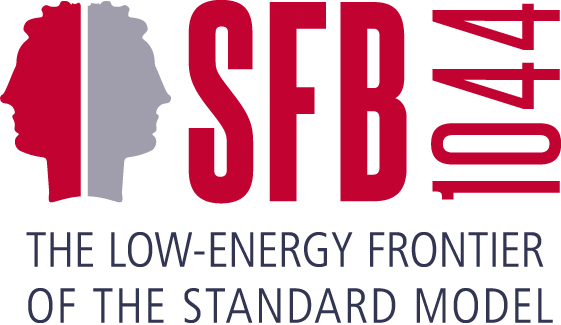
Institutsseminar Kern- und Hadronenphysik
Nov. 26, 2018 at
2 p.m. c.t.
in
HS Kernphysik, Becherweg 45
Prof. Dr. Michael Ostrick
Institut für Kernphysik
ostrick@kph.uni-mainz.de
Coupling Halo EFT to transfer, breakup and radiative-capture reaction models, a testcase study on 15C
Laura Moschini (Bruxelles)
Aside from being a one-neutron halo nucleus, 15C is an interesting nuclear system because it is involved in reactions of relevance for several nucleosynthesis scenarios such as inhomogeneous Big Bang models, neutron induced CNO cycles, and neutrino driven wind models for the r-process.
The aim of this work is to provide good predictions for various reactions involving 15C, using a single structure model.
So, first we determine the 15C structure within an Halo-EFT description [1] reproducing both the one-neutron binding energy of 15C ground state and the asymptotic normalization coefficient (ANC), fixed through the analysis of the 14C(d,p)15C transfer reaction at 17.06 MeV [2]. Then, we study the 15C breakup at intermediate (68 MeV/nucleon) and high energy (605 MeV/nucleon) using an eikonal model with a consistent treatment of nuclear and Coulomb interactions at all orders, which takes into account proper relativistic corrections. The former was measured at RIKEN [3], while the latter was measured at GSI [4]. Finally, we study the 14C(n,γ)15C radiative capture comparing our results to direct measurements performed by Reifarth et al. [5]. We find that our theoretical predictions are in good agreement with the experimental data for each reaction, thus assessing the robustness of the structure model provided for this nucleus. We show the importance of the inclusion of relativistic corrections in the case of the breakup at high energy, and we confirm the small contribution of the 15C d wave in the continuum in the neutron capture cross section of 14C.
[1] H.-W. Hammer, C. Ji, and D. R. Phillips, J. Phys. G 44, 103002 (2017)
[2] A. M. Mukhamedzhanov et al., Phys. Rev. C 84, 024616 (2011)
[3] T. Nakamura et al., Phys. Rev. C 79, 035805 (2009)
[4] U. Datta Pramanik et al., Phys. Lett. B 551, 63–70 (2003)
[5] Reifarth et al., Phys. Rev. C 77, 015804 (2008)